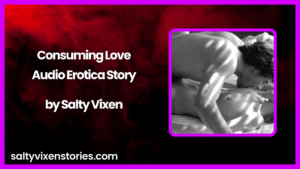
People who have lived through a traumatic event can find themselves experiencing emotional challenges long after the event has taken place. Although it is common for people to experience emotional challenges after trauma, their symptoms can lessen in intensity over time as they continue to heal. However, people who struggle with post-traumatic stress disorder (PTSD) find themselves experiencing symptoms that continue to cause them significant distress.
The thing is, a PTSD Trigger can happen at any given time and it is something we have to let cycle. I have my PTSD trigger from a relationship I had that ended three years ago. Some of my friends tend to roll their eyes and tell me to stop letting my ex live rent free in my head. When I posted on facebook my PTST trigger, I had 5 friends unfriend me because they thought I am being 'drama'. Truth is, when a person is going through it, the best thing to do is listen to them. That is all we need. The cycle will run and we are happy again.
In my case I was recently triggered from someone I grew up with nearly 20+ years ago write an awful thing on my website, I will talk about it in another post, or perhaps on my S-Spot with Salty Vixen Podcast, it wasn't Kosher what they wrote, thinking I wouldn't see it. In their minds they don't understand why I chose the brand name Salty Vixen and it has nothing to do with my Ex, in fact my EX knows about my Pen Name- let me make that clear. I was a Vixen in several Salty Situations, but with my ex, it is different, I am hurt. I still care about him but in the end, I am hurt and he will always hold a special place in my heart for him- with that said, the woman who trolled my site, didn't know the full story and I wasn't going to tell the full story as I have put it behind me, also protecting not just my ex but also me. With that said, it triggered a panic attack that turned to PTSD and what helped me cycle? talking to my friends and writing my Bedtime Stories with Salty Vixen audio stories. That is when I do my best writing. He will always be someone important to me.
The current Diagnostic and Statistical Manual of Mental Disorders, theDSM-5, is a manual that clinical professionals use to diagnose mental health conditions. In previous years, PTSD fell under the category of anxiety related conditions. The current version of the manual has placed post-traumatic stress disorder under the category of trauma- and stressor-related disorders.
Post-traumatic stress disorder can develop after the experience of a traumatic event, either a single isolated event or more chronic and recurring traumatic experiences. A variety of emotional disturbances and symptoms are associated with PTSD that cause clinically significant distress or impairment in the person's social interactions, their ability to work, or other important areas of functioning.
These 17 symptoms are divided into three separate clusters. The three PTSD symptom clusters, and the specific symptoms that make up these clusters, are described below.
Re-Experiencing Symptoms
- Frequently having upsetting thoughts or memories about a traumatic event.
- Having recurrent nightmares.
- Acting or feeling as though the traumatic event were happening again, sometimes called a "flashback."
- Having strong feelings of distress when reminded of the traumatic event.
- Being physically responsive, such as experiencing a surge in your heart rate or sweating, to reminders of the traumatic event.
Avoidance Symptoms
- Making an effort to avoid thoughts, feelings, or conversations about the traumatic event.
- Making an effort to avoid places or people that remind you of the traumatic event.
- Having a difficult time remembering important parts of the traumatic event.
- A loss of interest in important, once positive, activities.
- Feeling distant from others.
- Experiencing difficulties having positive feelings, such as happiness or love.
- Feeling as though your life may be cut short.
Hyperarousal Symptoms
- Having a difficult time falling or staying asleep.
- Feeling more irritable or having outbursts of anger.
- Having difficulty concentrating.
- Feeling constantly "on guard" or like danger is lurking around every corner.
- Being "jumpy" or easily startled.
Many of these symptoms are an extreme version of our body's natural response to stress. Understanding our body's natural response to threat and danger (the fight or flight response) can help us better understand the symptoms of PTSD.
Do You Need All of These Symptoms for a Diagnosis of PTSD?
To be diagnosed with PTSD, a person does not need to have all these symptoms. In fact, rarely does a person with PTSD would experience all the symptoms listed above. To receive a diagnosis of PTSD, you only need a certain number of symptoms from each cluster. Additional requirements for the diagnosis also need to be assessed, such as how the person initially responded to the traumatic event, how long the symptoms have been experienced, and the extent with which those symptoms interfere with a person's life. You can learn more about receiving a diagnosis of PTSD from the following article:
Being Diagnosed with PTSD: What to Expect
The symptoms of PTSD can have a major impact on many areas of a person's life. Fortunately, you can do some things to cope with the symptoms of PTSD.
Coping
The symptoms of PTSD can be difficult to cope with, and as a result, many people with PTSD can be susceptible to developing unhealthy coping strategies, such as alcohol or drug abuse or deliberate self-harm. Because of these risks, it is important to develop a number of healthy coping skills to manage your PTSD symptoms. Coping strategies you can work on incorporating in your life include:
-
- Learning how to cope with anxiety
- Finding healthy ways to manage your emotions
- Learning how to cope with unpleasant thoughts and memories
- Managing sleep problems
- Being able to identify and cope with PTSD triggers
- Managing flashbacks and dissociation
A number of psychological treatments have been found to be effective in helping people cope with the symptoms of PTSD. Some of these include:
-
- Cognitive-behavioral therapy (CBT) for PTSD focuses on changing the way in which you evaluate and respond to situations, thoughts, and feelings, as well as unhealthy behaviors that stem from your thoughts and feelings.
- Exposure therapy is a behavioral treatment for PTSD that aims to reduce your fear, anxiety, and avoidance behavior by having you fully confront, or be exposed to, thoughts, feelings, or situations that you fear.
- Acceptance and commitment therapy is a behavioral treatment that is based on the idea that our suffering comes not from the experience of emotional pain, but from our attempted avoidance of that pain. Its overarching goal is to help you be open to and willing to have your inner experiences while focusing attention not on trying to escape or avoid pain, since that is impossible to do, but instead on living a meaningful life.
- Eye movement desensitization and reprocessing (EMDR) is another highly effective therapy for treating PTSD that involves thinking about your trauma while paying attention to an outside stimulus, such as a light or a finger moving back and forth. It helps you make new connections between your trauma and more positive thinking.
In Children
Children are not immune to the challenges of post-traumatic stress disorder. The National Child Traumatic Stress Institute (NCTSI) states that more than two-thirds of children have reported at least one traumatic experience by the age of 16. Additionally, it is estimated that 19 percent of injured and 12 percent of physically ill youth have PTSD. Examples of potential traumatic experiences could include events such as:
Because children can have a more difficult time processing their experiences and coping with the lasting emotional impact of trauma, it is important for support people (caregivers, relatives, etc) to allow children the opportunity to talk about their experience. A critical part of a child's recovery and healing is their support system. Having a strong support system and access to trauma-informed care is essential to their healthy coping and overall healing.
For Loved Ones
Finding ways to support a loved one with PTSD can be a struggle. One of the most helpful things you can do is learn about the symptoms and the challenges of living with post-traumatic stress disorder. Becoming familiar with what your loved one might be experiencing can help increase compassion and understanding, making it easier to have conversations about their challenges.
Inviting and encouraging your loved one to seek help from a trained professional is paramount. Since unaddressed symptoms of PTSD can become more severe over time, it is important to try and help your loved one find helpful resources to begin the healing process. Do not be afraid to ask your loved one about their experiences and be open to actively listening. You are not expected to "fix" anything, just allow your loved one space to talk openly without fear of judgment or criticism.
Ask your doctor or mental health professional for a recommendation or referral to someone who specializes in treating PTSD.
Sources:
- American Psychiatric Association (APA). Diagnostic and Statistical Manual of Mental Disorders. 5th ed. Washington, DC: 2013.
- Pai A, Suris AM, North CS. Posttraumatic Stress Disorder in the DSM-5: Controversy, Change, and Conceptual Considerations. Hunter SJ, ed. Behavioral Sciences. 2017;7(1):7. doi:10.3390/bs7010007.
- U.S. Department of Veterans Affairs. DSM-5 Criteria for PTSD Diagnosis. PTSD: National Center for PTSD. Updated February 23, 2016.
- U.S. Department of Veterans Affairs. PTSD and DSM-5. PTSD: National Center for PTSD. Updated February 22, 2018.
- U.S. Department of Veterans Affairs. Treatment of PTSD. PTSD: National Center for PTSD. Updated August 18, 2017.




















